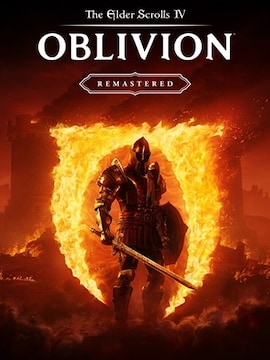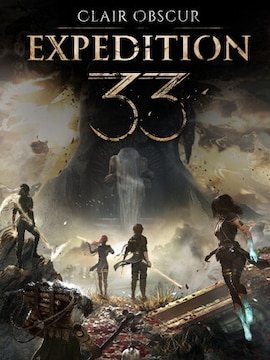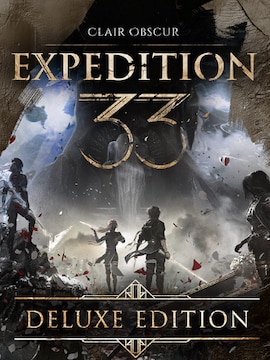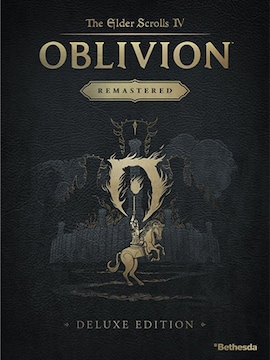Regardless where you stand on the multiple barricades standing all across gaming: single player vs. multiplayer, consoles vs. PC, Call of Duty vs Battlefield, and many more, there’s one thing that we can probably all agree about: 2017 is a year to remember. Multiple high-profile game launches, multiple controversies which rocked the landscape for months to come… But as the year draws to a close it’s better to celebrate the good, not the bad, because fostering positivity is something our favourite hobby needs. That said, let’s take a look at the good things which happened to gaming this year, shall we?
Nintendo Switch
Nintendo is something of a wonder in how they sidestep so many of the industry’s buzzwords and still make a profit. Where we are fed visceral, brutal games, Nintendo gives us bright and friendly Mario Odyssey. Where we have scripted sequences, Nintendo gives us The Legend of Zelda: Breath of the Wild and its freedom of exploration. Where there is a constant push towards making games as hard as possible, Nintendo say: hey, hold on, we can have a cookie and eat it too. Nintendo’s approach was culminated this March when Switch was launched: a portable console with some interesting gimmicks.
Thanks to its well-curated game library Nintendo Switch, the late and beloved Satoru Iwata’s final opus, became a smash hit. Its appeal is indisputable, because in the market always gunning to the highest performance and increasing fidelity Nintendo Switch and its games decided to go for style, fun, and experience first and still became a success. In fact, it’s been reported that Nintendo share prices have grown by well over 70% since Switch was launched, exceeding 40.000 yen mark for the first time since 2008. That is easily attributed to Switch’s popularity as a console and the very good reception of the titles published for it.
The March premiere of NS was one of definitive highlights of the year, and we can only expect more fun to come to us from the Japanese handheld, while Nintendo shareholders can rest assured that their investment paid off in a major way.
The resurgence of singleplayer experiences
Multiplayer experiences and prolonged player engagement may rule the gaming landscape the world over, but this year has proven that singleplayer isn’t dead, and still has what it takes to capture the minds and hearts of the gamers.
Resident Evil 7 brought back the horror to a franchise which came close to becoming a pastiche of itself. Horizon Zero Dawn was a stunning spectacle with a thrilling gameplay and likeable protagonist. Nier: Automata rocked the headlines for a long time, while Hellblade: Senua’s Sacrifice was Ninja Theory’s respectful and insightful letter of support to people suffering from mental illnesses mixed in with a beautiful and vicious slasher gameplay. Bethesda Softworks alone published three brilliant games: the thrilling, brutal and oddly sincere Wolfenstein II: The New Colossus, the mind-scrambling, claustrophobic Prey, and disturbing The Evil Within 2.
There’s also the incredible, stunning, full-fledged RPG experience brought by Larian Studios in Divinity: Original Sin 2. That’s barely scratching the surface, because we didn’t even mention the presence of actual singleplayer campaigns in otherwise multiplayer titles. The point is that the singleplayer games which launched this year proved to everyone that delivering finite value is as valid and profitable now as it has ever been, and that many gamers appreciate it. Let’s hope the trend continues.
PLAYERUNKNOWN’S BATTLEGROUNDS
PUBG, or Plunkbat, as some have taken to calling it, was Brendan Greene’s shot at his own game after creating multiple mods for other productions. And somehow, along the way PUBG has become the most played game on Steam, consistently tops sales charts, and enjoys crazy popularity in Twitch. Pretty impressive from a game which spent the past couple months in Early Access and only launches properly on December 20th this year.
The premise is simple: a hundred people get tossed out of a plane onto an isolated island with nothing more than some t-shirts and underpants for decency. The goal: be the last one standing. The means: finding gear in the empty buildings scattered around the islands, hiding in the attics, eliminating other players before they even know you’re there. This is hardly a new idea, but there is something about its execution in Plunkbat that drew people in and keeps them there. Consequently, more Battle Royale games and modes start to pop up, most notably a Free-to-Play BR for construction-based wave survival game Fortnite (sic), which goes for the same “Last Man
Standing” vibe, but with a less serious tone, and fortifications you can build mid-match, if you want to. Between the more friendly atmosphere and free-to-play nature, Fortnite Battle Royale managed to gather 30 million players, according to the developers, Epic Games. Despite Fortnite’s emergent popularity, PLAYERUNKNOWN’S BATTLEGROUNDS remains at the very top of the pecking order for the time being. Even with Mixed user reviews (around 60% of players marking the game as a personal recommendation), PUBG has 25 million owners, most of them actively playing the game according to SteamSpy, a website devoted to tracking statistics for Steam-launched products.
Hellblade: Senua’s Sacrifice
We’ve mentioned Hellblade earlier on, but it bears mentioning again, because this game is truly remarkable, due to its subject matter, it’s execution, and it’s development. See, Hellblade is about a Pict woman who travels to Helheim to rescue the soul of her lover from goddess Hela. The thing is, Senua suffers from severe psychosis, a condition, which is translated brilliantly into the game. The player hears the same voices Senua does, and their sometimes helpful, more often distracting. The disturbing, unavoidable voices stress the overall mood of doubting your own sanity. The game was developed in close cooperation with mental health specialists to ensure the topic is approached respectfully, with good insight, and without any stigmatizing stereotypes. The result is a scary game with a character whose strength doesn’t come solely in the form of proficiency with weapons.
At the same time, Hellblade looks amazing, especially the facial animations, the combat system (it is an action game, after all) is great, the art direction is outstanding… Remarkably, NT has published it on their own, out of their own funds, bypassing any demands a potential publisher could have made to ensure the game sells better. Senua’s Sacrifice proves that games can tackle mature, important topics such as mental health in a responsible way, and is another argument for treating games as works of art. It’s the kind of maturity video games sorely lack in comparison to the “blood and guts” kind of “mature content”.
Admittedly, it took the game three months to turn profit for the developer, but that alone also proves that setting goals for the long term, instead aiming for a burst of income at release works just as well. Hellblade managed to generate profit even despite a virtually non-existent marketing campaign, limited largely to word of mouth and occasional developer diary, largely reducing the budget to what’s actually necessary to develop and launch the game. For a game developed over three years by a very small studio, it is a remarkable success, especially since Ninja Theory has expected the game to become profitable after nine instead of three months.
Kojima unleashed and Death Stranding
When Hideo Kojima parted ways with Konami after Metal Gear Solid V: The Phantom Pain some part of the gaming world stopped, anxious to see what the mastermind behind the incredibly convoluted Cold War-spy-SF series would do next. We weren’t ready.
The first trailer for Death Stranding, featuring a probably human fetus, nude Norman Reedus and a bunch of whales was weird. When the next one came, showing us Guillermo del Toro and Mads Mikkelsen as guest stars, things started getting uncomfortable. And then in early December we received another trailer, which made the entire thing seem positively terrifying with how uncanny and bizarre all of it is.
In all fairness, the trailers aren’t the game, and we have little reason to doubt Kojima’s talent. But the game doesn’t launch for quite some time yet, and until it does, all 2017 has are the trailers. Take them or leave them, they are something hard to forget, we could just hope that the game will live up to the unforgettable discomfort the trailers induce. One way or another, 2017 gave us a good idea of what’s hiding in Hideo Kojima’s mind, now that he can do whatever he wants. It’s exciting.
What awaits us in 2018?
We are still some time away from the new year, and with multiple high-profile games set for release in 2018, we can only hope they will be as good as we all want them to be.
Of course everyone is going to have a slightly different list of positive things that make the gaming in 2017 worth remembering, and most of us have a separate list, written in black ink on a dusty parchment, of things we’d like to forget about the gaming of this year. Whether balanced or skewed to one side or the other, let us all hope that the gaming industry will learn on its mistakes and draw the right conclusions from the successes, so the last years of 21st millennium’s second decade are something to remember for years to come.




